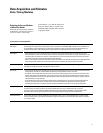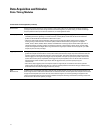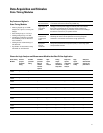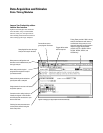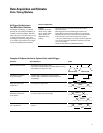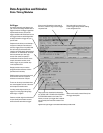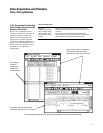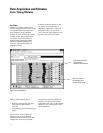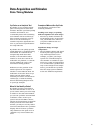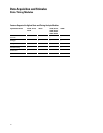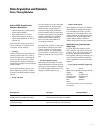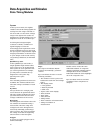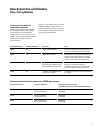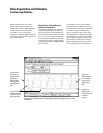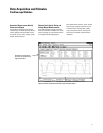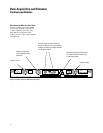
25
Data Acquisition and Stimulus
State/Timing Modules
Eye Finder as an Analytical Tool
Eye finder is very useful as a first-
pass screening test for data valid
windows. Because eye finder quickly
examines all channels, it is
considerably faster than examining
each channel with an oscilloscope.
After running eye finder, you may
want to use an oscilloscope to
examine only those signals that are
close to your desired specifications
for setup and hold.
Eye finder also can quickly provide
useful diagnostic or troubleshooting
information. If a channel has an
unexpectedly small data valid
window, or an anomalous offset
relative to clock, this could be an
indication of a problem, or could be
used to validate the cause of an
intermittent timing problem.
Differences in the position of the
stable region from one signal to
another on a bus indicate skew. An
indication of excessive skew on eye
finder can help isolate which
channels you want to check with an
oscilloscope, or with the Timing
Zoom 2 GHz timing analysis mode
in your logic analyzer.
When Do You Need Eye Finder?
Eye finder becomes critical when
the data valid window is <2.5 ns. If
you’re unsure where your clock edge
is relative to the data valid window,
you can run eye finder for maximum
confidence. If the clock in your
system runs at 100 MHz or slower,
and the clock transitions are approxi-
mately centered in the data valid
window, you may not see any transi-
tion zones indicated in the eye finder
display. This is because eye finder
only examines a time span of 10 ns
(16760A: 6 ns) centered about the
clock.
Examples of When to Run Eye Finder
You should use eye finder in the
following situations:
Probing a new target, or probing
different signals in the same target
• Because eye finder examines the
actual signals in the circuit under
test, you should run it whenever
you probe a different bus or a
different target.
Significant change of target
temperature
• The propagation delays and signal
levels in your target system may
vary with temperature. If, for
example, you place your target
system in a controlled tempera-
ture chamber to evaluate its oper-
ation over a range of temperatures
or to trouble-shoot a problem that
only occurs at high or low temper-
atures, you should run eye finder
after the target system stabilizes
at the new ambient temperature.



